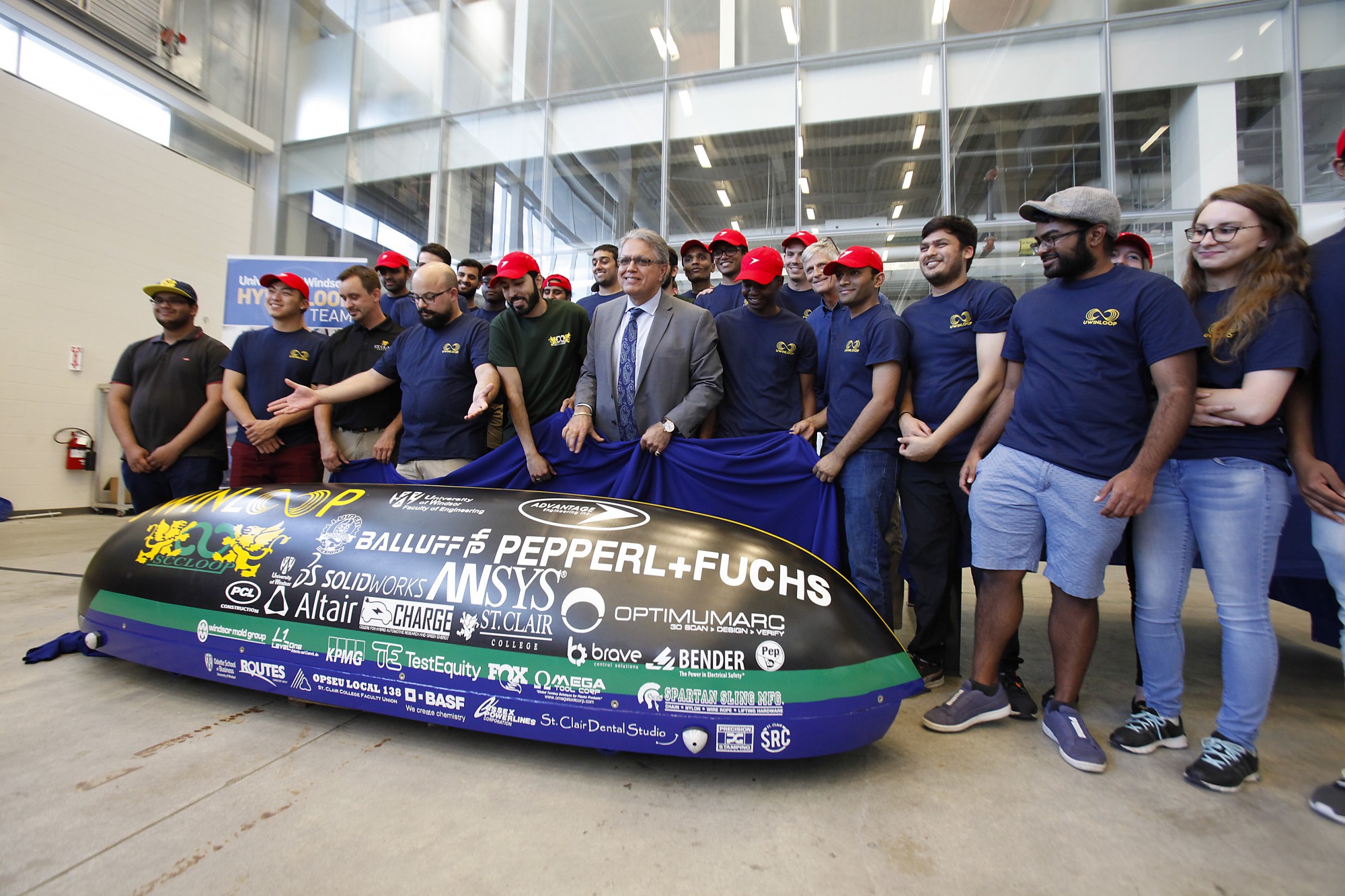
A team of University of Windsor and St. Clair College students is heading to California to compete in Elon Musk’s SpaceX Hyperloop Pod Competition.
The uWinLoop and SCCLoop duo is one of 21 teams worldwide to advance to the finals and compete July 21 in Hawthorne, California, at SpaceX headquarters.
Dozens of supporters gathered in the Ed Lumley Centre for Engineering Innovation Friday, July 5, to send off the team and watch the engineering, business, and marketing students reveal the pod they’ve been working on for more than a year.
“We’re looking forward to putting Windsor against the best on the world stage,” says third-year mechanical engineering student Stefan Sing, uWinLoop’s president and founder.
— Published on Dec 20th, 2020

A UWindsor student studying aerospace engineering is one of four province-wide to receive an Ontario Aerospace Council scholarship.
Atilla Saadat, a third-year mechanical engineering student in the aerospace stream, received a $2,500 scholarship for academic achievement and his work outside the classroom. Saadat is the founder and space systems technical lead of the University of Windsor Space & Aeronautics Team (WinSAT), a multi-disciplinary group of more than 30 students building a space-ready 3U Cube Satellite for Low Earth Orbit to compete in the Canadian Satellite Design Challenge.
“His work has already demonstrated a tangible impact at UWindsor, as WinSAT aims to increase the space and aeronautics engineering opportunities at our institution,” says Afshin Rahimi, an assistant professor in the University’s Department of Mechanical, Automotive and Materials Engineering.
— Published on Jan 5th, 2021
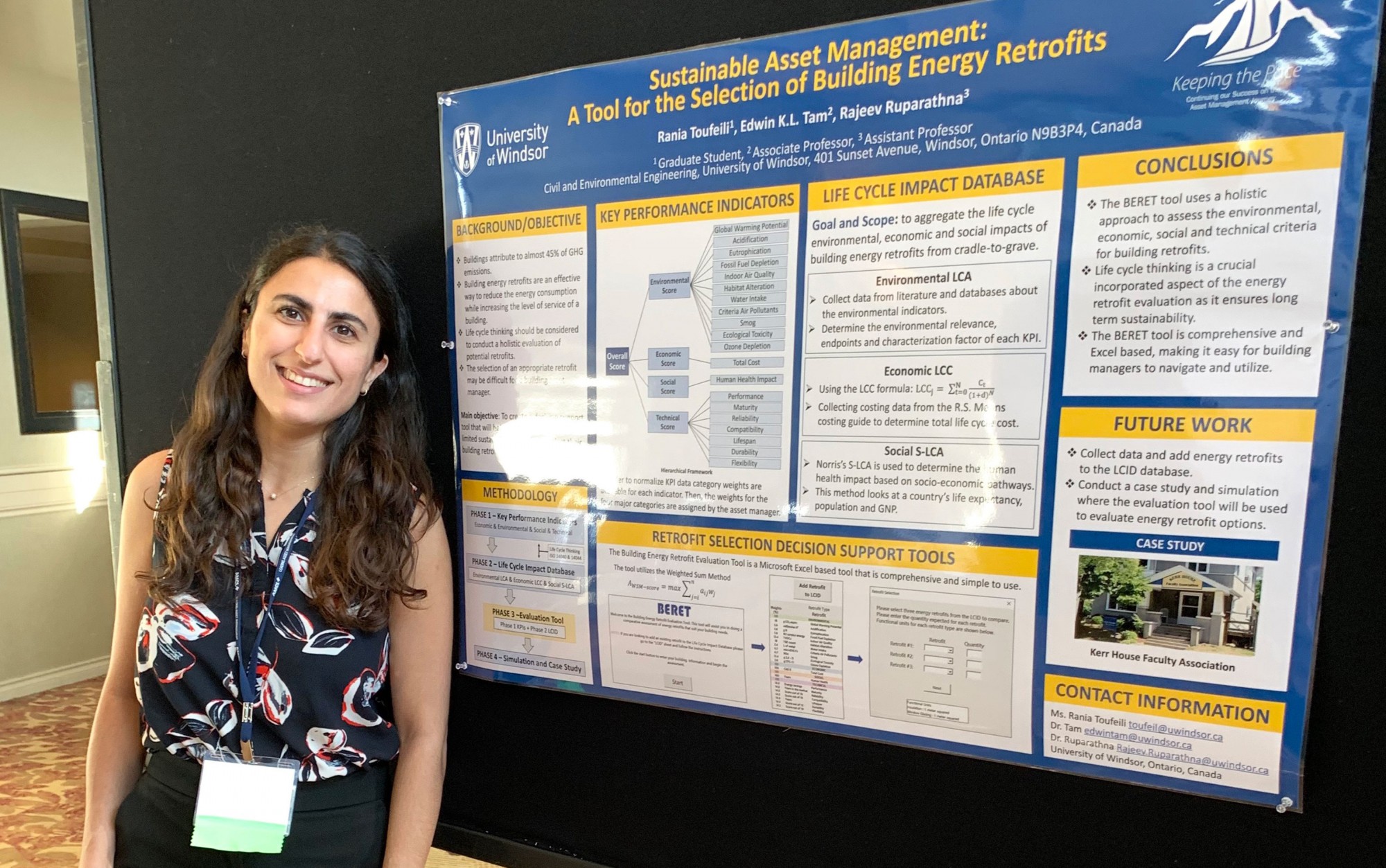
How does a building manager decide which energy retrofit is the most economical and least impactful on occupants and the environment?
Rania Toufeili has the answer. A master’s student of environmental engineering, she has designed an asset management decision support tool that can assist building managers in selecting the preferred technically feasible energy retrofit. The support tool landed her second place at the Canadian Network of Asset Managers student research symposium held May 6 to 9 in Kelowna, B.C.
“Building energy retrofits are a very effective way to decrease the energy consumption of a building and in turn decrease global greenhouse gas emissions,” Toufeili says.
Her tool combines multi-criteria decision making with life cycle thinking to develop a more comprehensive and expansive retrofit evaluation method than others on the market. The evaluation considers the energy retrofit’s environmental, economic, social, and technical performance by using a set of relevant key performance indicators.
Toufeili was selected from approximately 30 student applicants and nine student symposium presenters studying topics connected to asset management.
— Published on Jan 5th, 2021
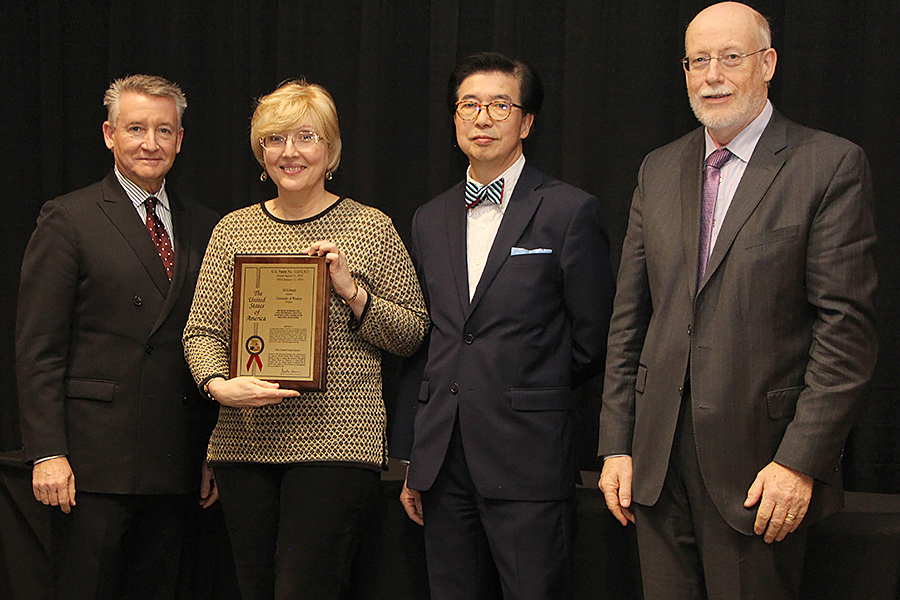
The University of Windsor recognized the accomplishments of more than a dozen engineering faculty and students at the school’s annual Celebration of Excellence in Research, Scholarship and Creative Activity.
The awards ceremony, held March 7 at Alumni Auditorium in the CAW Student Centre, recognized scholars and researchers university-wide in all stages of their careers.
“Today’s celebration is the sign of a thriving academic community, where people are flourishing in their research, scholarship and creativity, and receiving recognition and support for the extraordinary work they do,” said interim president Douglas Kneale.
“What is so impressive is our collective bench strength in research and scholarship. We have outstanding students, emerging scholars, and established researchers, singular efforts and large collaborative projects, local, provincial, national, and international honours and success across all disciplines.”
— Published on Jan 5th, 2021
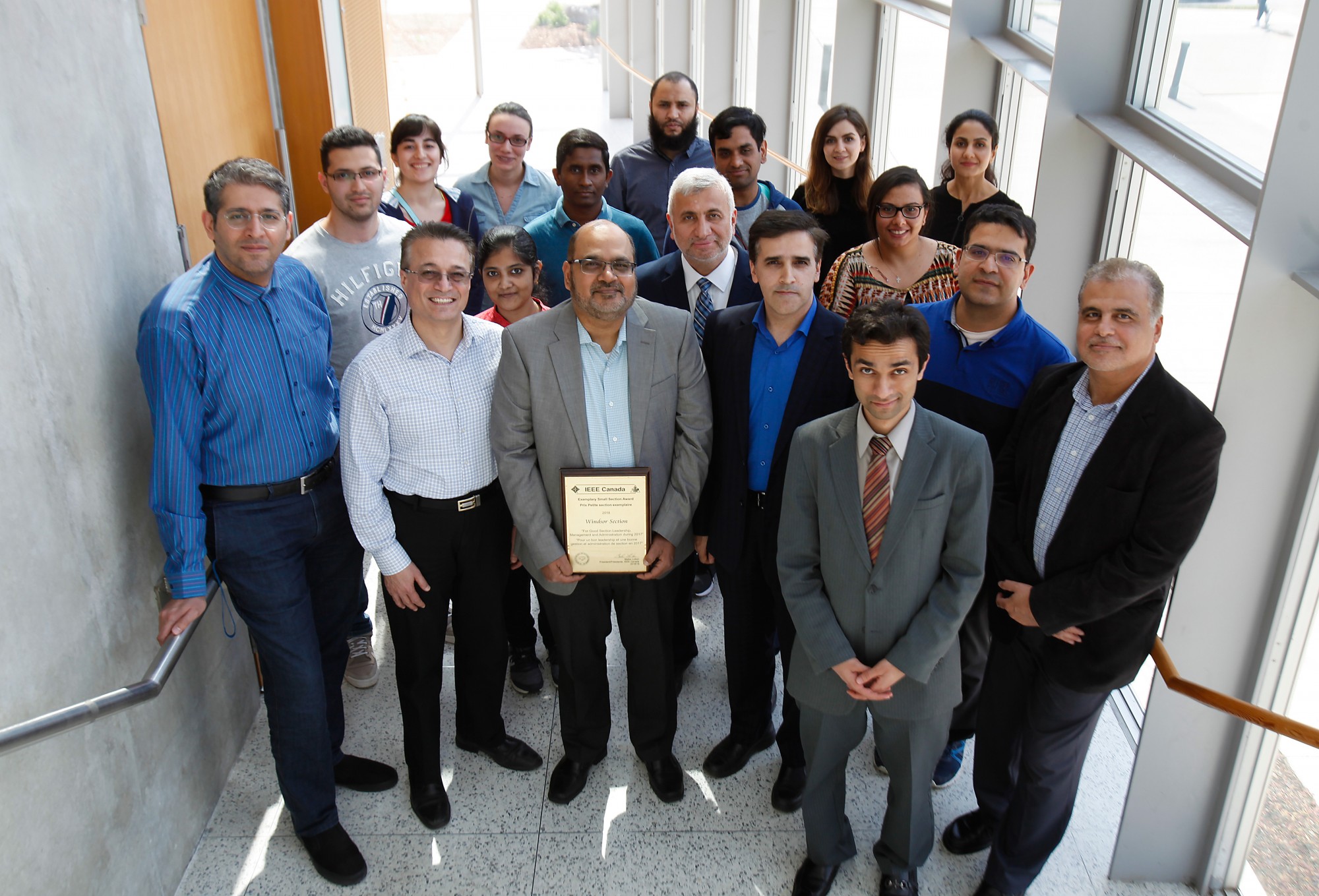
Dr. Mohammed Khalid, an electrical engineering professor, has been elected to the executive committee of the Institute of Electrical and Electronics Engineers (IEEE) Canada.
IEEE is the world's largest technical professional organization dedicated to advancing technology for the benefit of humanity. It has more than 400,000 members worldwide, including more than 16,000 in Canada. IEEE membership offers access to technical innovation, cutting-edge information and networking opportunities.
— Published on Jan 5th, 2021
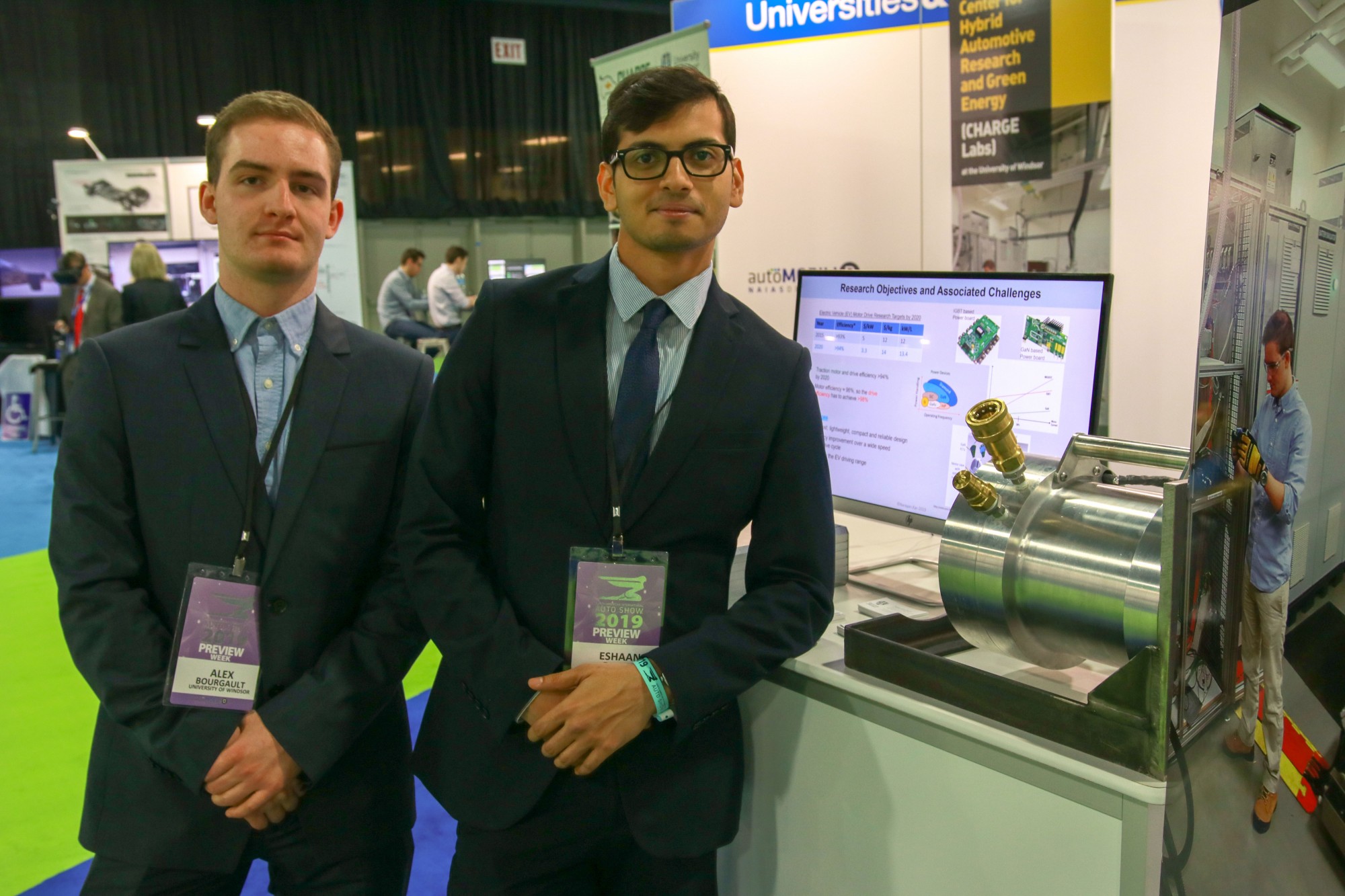
Upstairs at the North American International Auto Show is this year’s array of new cars being unveiled by automakers, but the lower level was where the wizardry behind them begins.
Researchers from UWindsor Engineering’s Centre for Hybrid Automotive Research and Green Energy — CHARGE, for short — were among the exhibitors on the lower level of Cobo Center, displaying a prototype of an electric motor created in collaboration with Ford Motor Company of Canada.
CHARGE Labs researchers also brought along a controller that runs an electric motor, and information on the independent, third-party testing they can provide manufacturers developing their own electric vehicles.
“We are here to showcase the contributions we are making as a university with this lab,” said Narayan Kar, director of CHARGE Labs and a professor with expertise in electrified transportation systems. “We are creating knowledge and experts for the future…. That’s what we’d like to demonstrate to the outside world.”
— Published on Dec 21st, 2020
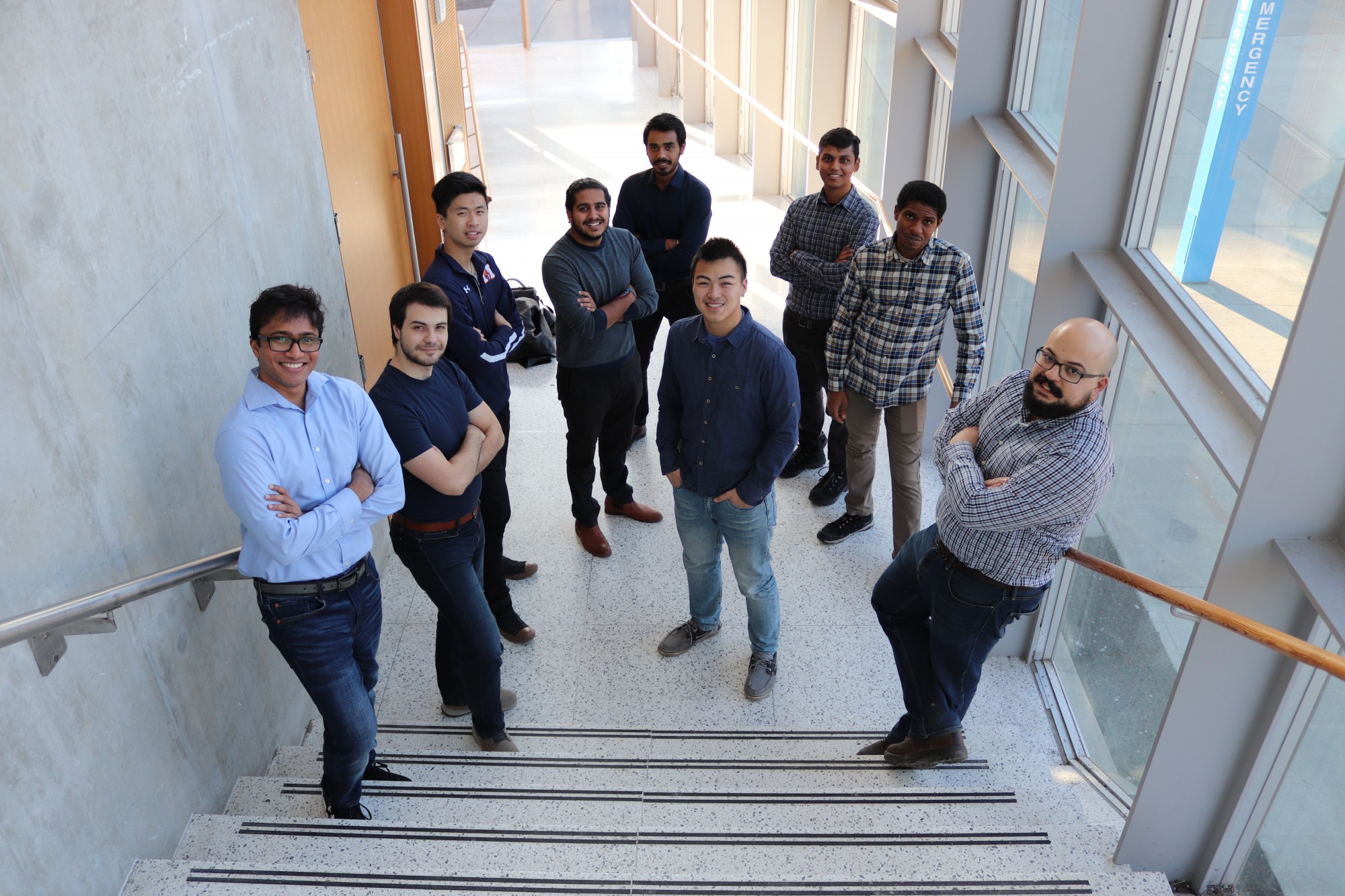
UWindsor’s Hyperloop team is one of 52 teams worldwide to advance in a competition that encourages innovations in high-speed transportation.
The team formed in 2017 and hasn’t stopped working towards its goal of creating an electrically powered linear induction motor to propel a levitating pod through a sealed tube at speeds over 500 km/h. The group’s initial design work has helped them advance in SpaceX’s Hyperloop Pod Competition.
“We’re very dedicated to this,” says Stefan Sing, the team lead and founder who’s in his third year of mechanical engineering. “We’ve invested heavily in the linear induction motor and haven’t stopped making revisions. The team has been doing a stellar job.”
The team of 25 meets five times a week and ranges from undergraduate to graduate students studying mechanical, electrical and industrial engineering, and computer science.
— Published on Dec 21st, 2020
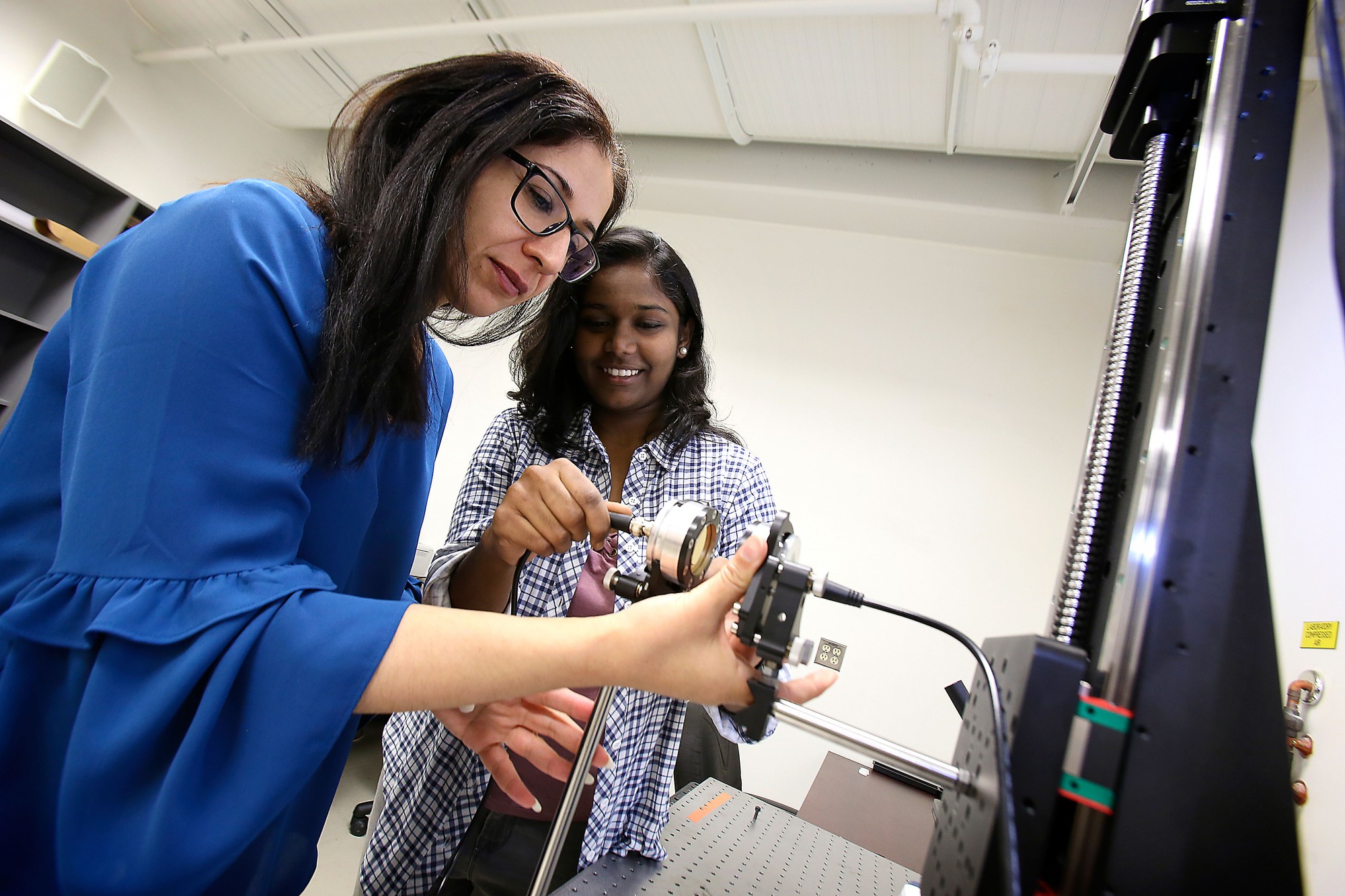
What if family doctors had access to low-cost, handheld scanners or biosensors that could detect cancer at an early stage? What if they could monitor a patient’s heart activity through a wearable device and detect early signs of cardiovascular disease? How about a sensor that could prevent intoxicated drivers from operating vehicles or a navigation system that could aid the visually impaired indoors?
Researchers at the University of Windsor hope to advance these technologies and more in Windsor’s first state-of-the-art microfabrication facility. The high-tech clean room will be specially designed to facilitate multidisciplinary micro- and nano-scale research by controlling air pollutant levels, pressurization, temperature and humidity. It’s slated to open in 2019 in the Ed Lumley Centre for Engineering Innovation.
“This fabrication facility will provide us with an ideal incubator for academia and industry to foster collaborative research and commercialization of advanced sensors, thus increasing our leadership in the emerging area of the micro nano sensor industry — an area which is rapidly growing,” says Dr. Jalal Ahamed, an assistant mechanical engineering professor who designs and fabricates micro- and nano-systems for a variety of applications, including healthcare, automotive, aerospace and manufacturing.
— Published on Jan 5th, 2021
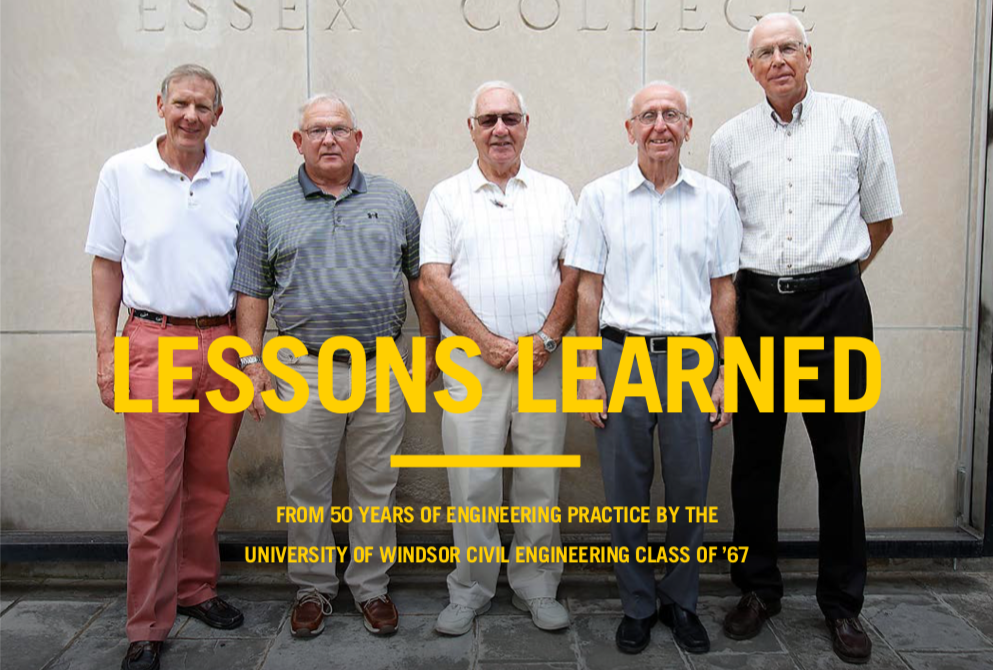
In Canada’s centennial year, 13 civil engineering graduates from Ontario’s newest public university entered into an unsuspecting world to compete for internship positions against those who graduated from older, more prestigious institutions.
In 2017, six members of the class returned to campus to rekindle friendships, poke fun at their convincing old men disguises, and offer the following observations and suggestions to those who are following in their footsteps.
Engineers are the primary life-support providers for the seven billion messy people crowded on planet Earth. They rely upon us to put science into action to satisfy their rapacious needs and to accommodate the estimated one billion newbies added to this planet every 12 to 15 years.
Their expectation is that these needs be satisfied not only quickly, safely and affordably, but sustainably as well. Welcome to our busy profession. Our effectiveness as engineering practitioners depends upon our ability to research, develop and apply the newest scientific discoveries and technological advances wisely.
— Published on Jan 5th, 2021
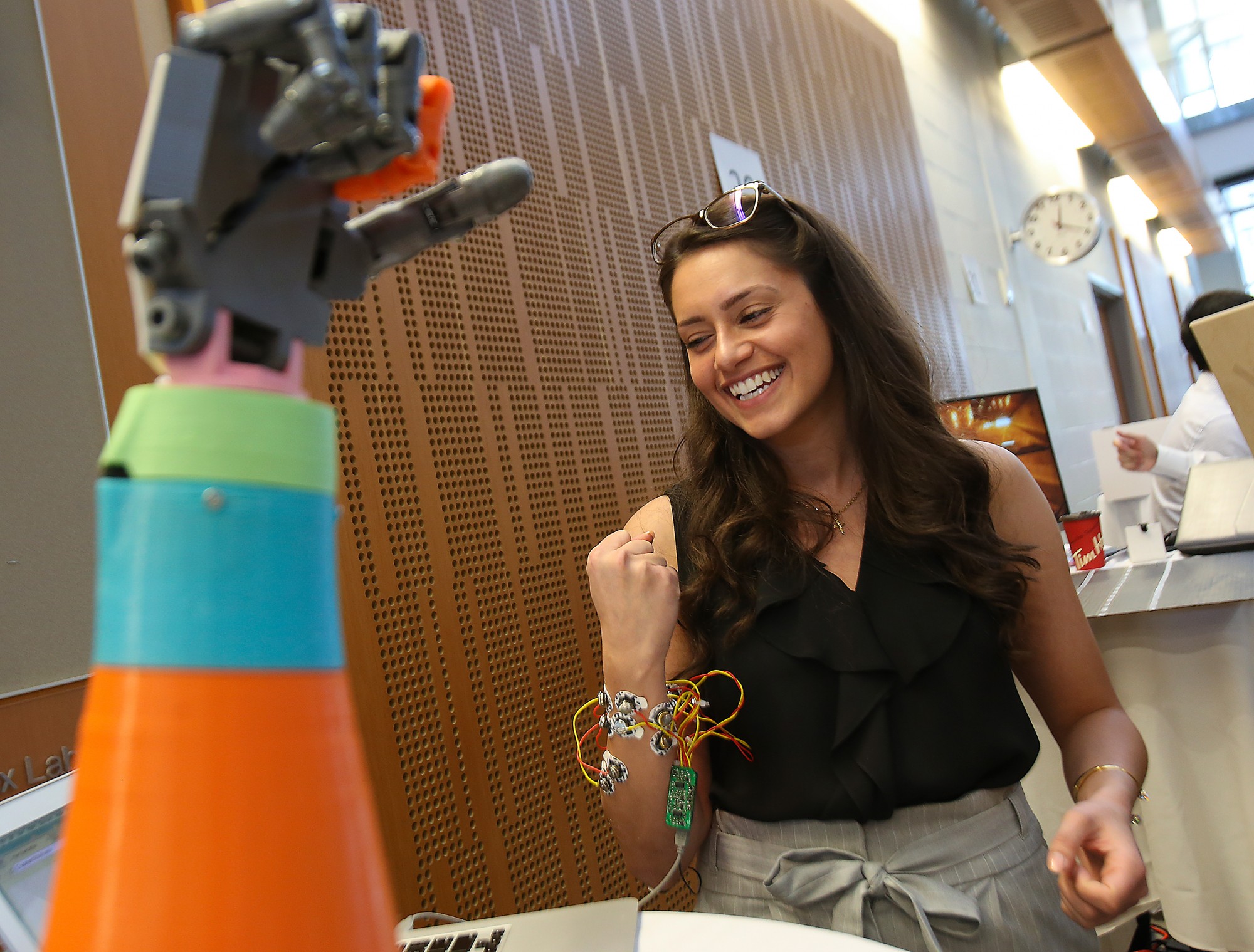
The exciting part of working on a project redesigning the intersection of California Avenue and Wyandotte Street is the possibility of seeing it implemented, says Emma Teskey.
A fourth-year civil engineering student, she was part of a group that suggested several changes to the pavement and traffic signalling systems that would make the crossing safer for pedestrians and smoother for vehicles.
It was one of more than 60 projects displayed by graduating engineering students during Capstone Design Demonstration Day, Friday in the Centre for Engineering Innovation.
Teskey and her teammates — Abigayle Diemer, Kailee Dickson, Curtis Lanoue, and Sarah Zaarour — suggested altering the traffic signals so that cars and trucks are stopped in all directions while pedestrians cross, a system known as the “pedestrian scramble.” They also proposed adding wide white stripes to the crosswalk pavement and relocating a transit stop so buses do not block the intersection.
— Published on Jan 7th, 2021










